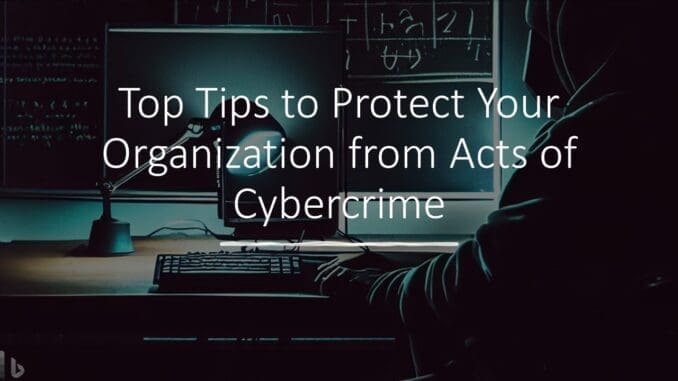
In 2023, every business, regardless of its size or the sector that it operates in, needs to adequately protect itself from the malicious acts of cyber criminals. Every year, the methods used in cybercrime become more advanced, with some of the most knowledgeable cybercriminals launching attacks on businesses that can be difficult to protect against or even recognize in the first instance.
However, many acts of cybercrime rely on a lack of understanding of malware and other forms of intrusion in the workforce. Even a simple and relatively unsophisticated attack can cause immense damage to an organization if staff aren’t adequately trained to recognize it as malicious in nature.
This article will discuss top tips to help any organization protect itself from cybercriminals’ threats.
Protect online applications
It’s estimated that 98% of all Indian businesses use cloud-based platforms for their critical applications and software systems. The benefits of using cloud-based systems are clearly recognized in business. A key benefit is that they allow the adoption of remote or hybrid working practices, as any staff member can access the systems remotely if they have an internet connection and suitable clearance to use the platform.
However, any IT system that’s located and run from an online location may be at risk from hackers. Cybercriminals can attempt to gain access to cloud-based IT architecture if they identify weak points in the system that provide an accessible route.

Thankfully, by using a modern API management platform, companies will benefit from the IT security features of the system. These may include monitoring traffic to specific applications and ensuring that the correct authentication processes are implemented (such as a token authentication system when logging in).
In addition, modern API management platforms commonly include monitoring and testing features. The IT security team can use these to assess the relative strength of applications against intrusions and check for any potential weak points that provide an easy entry point.
Cybercrime education
As previously mentioned, every year, new and emerging cybercrime threats emerge, and more sophisticated methods are used by cybercriminals to gain access to corporate systems. You can read more about some of the emerging threats that the Indian administration is aware of by clicking here (PDF File).
As the sophistication of acts of cybercrime increases and a more varied selection of methods are employed, there’s a greater need to ensure that comprehensive education in this field is rolled out to employees. Ideally, this will form part of a mandatory training package for new starters to assure the organization that the workforce has a base level of knowledge and awareness of cybercrime methods.
This training should ideally cover specific examples of the techniques used by cybercriminals (e.g., emails that contain malicious attachments or suspicious emails that don’t appear to be from the alleged sender). In addition, yearly IT security programs should be rolled out to ensure that staff knowledge in these areas stays updated with emerging methods and threats.
Create an IT risk register.
Finally, every organization should aim to compile a comprehensive IT risk register that highlights any weak points in the company’s IT infrastructure and contains information on emerging risks and how they may impact the company.
An IT risk register should use a likelihood and consequence risk scoring system. This will allow the organization to put a specific value on IT risks and can help to indicate where the priorities are for remedial actions to be put in place.
The risk register should be regularly monitored and updated so it stays relevant to the company and captures any new or emerging IT threats, either from within the organization (i.e., new software that may be susceptible to attacks) or from external factors.

Be the first to comment